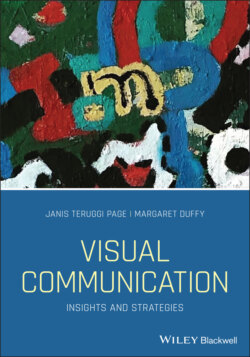Читать книгу Visual Communication - Janis Teruggi Page - Страница 30
What's Ahead?
ОглавлениеIf we can better understand how meanings are produced, we can become smarter consumers of visuals and other communication and more effective creators. As you can see from the previous discussion, how we communicate and interpret visuals is deeply rooted in our cultural worlds and expectations. In the following chapters, we'll explore how and why images communicate effectively, how they can fail to communicate, and how to apply that knowledge as professional communicators.
Chapter 2 outlines useful approaches to ethical decision‐making in creating and consuming visuals.
Chapter 3 explains a classic way to explore the meanings of images: visual rhetorical analysis, and then introduces the next four chapters that deal with symbols, metaphors, narratives, and imaginative fantasies.
Chapter 4 teaches semiotics: how visual “signs” and symbols communicate within a culture.
Chapter 5 covers how the comparative functions of metaphors can be a powerful visual strategy.
Chapter 6 illustrates the storytelling capacities of visual images.
Chapter 7 helps you see how visuals can illustrate dramas and meanings within group communication.
Chapter 8 is the first of four chapters that cover professional practices using visual images. This chapter helps you to understand advertising, its compelling visual qualities, and questions of ethics.
Chapter 9 continues with strategic communication, featuring the field of public relations and its use of visuals, for example, in crisis, public service, and political communications.
Chapter 10 features the role of visual imagery in journalism, the image's significance in delivering news, and issues of subjectivity and misinformation.
Chapter 11 teaches how to “read” and perform an organization's culture from the standpoint of observing and transmitting visual cues.
Chapter 12 builds on all previous chapters by developing your intercultural literacy when it comes to the use of visual imagery.
